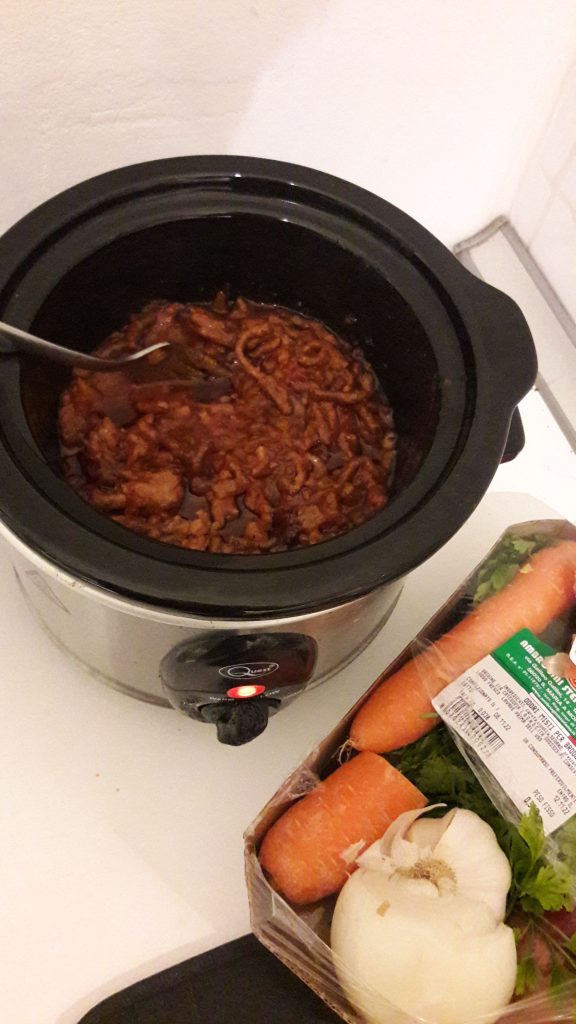Ragù might seem like one of those sacred cow recipes (ahem), but everyone has their own way of doing it. I was never quite satisfied with mine until one of my students—a hardline, beef-eating, cattle-farming Tuscan—amazed me by suggesting butter rather than olive oil as a frying fat. He was absolutely right: the butter balances it out, leaving none of the olive-y undertaste.
This does need a blast of the gas to begin with, but you can then put it in the slow cooker and let it bubble away safely for hours, consuming about the same electricity as a lightbulb.
Serves 3-4
Ingredients
500g approx. mince/ground (beef, pork, or ideally a mixture of the two)
1 clove of garlic
1 onion
1 carrot
1 stick of celery
Butter
Beef stock pot
Pepper
Rosemary
1 bay leaf
Half a glass of red wine
Tomato concentrate
Tomato passata

Method
Melt a knob of butter over a high heat and drop in the mince. Break up the meat with a spatula, turning it so that it browns on all sides. The fat should start to render.
While the mince is browning, chop up a clove of garlic and half a large onion, and dice half a large carrot and most of a stick of celery (keep stirring the mince every so often). Over a medium heat, melt another knob of butter in a separate frying pan and throw in all the vegetables to sweat. Sauté them for about 5 minutes, by which point the mince should be nicely caramelized.
Add the vegetables to the mince: from now on, you’ll only be using one pan. Reduce the flame to medium-low. Mix everything together and plop in a beef stock pot, which offers a better seasoning than salt. Splash in a bit of red wine and let evaporate, then squeeze in some tomato concentrate—maybe a fifth of a tube. Stir everything together, so that the ragù takes on a lovely rusty colour.
Add some tomato passata. (I use Barilla’s ready-made ‘Basilico’ sauce, flecked with basil.) About half the jar should be enough, depending on how much purée and wine you put in. You don’t want the ragù too sloppy.
Sprinkle in some pepper and a touch of rosemary, and add the bay leaf. Stir everything around on a lowish flame for a few minutes, then transfer to the slow cooker. Cook on a low setting for really as long you want. It’s good to give it a quick stir every couple of hours, but you can happily leave it along for the best part of a day.
Serve over your preferred pasta. I favour ricotta and spinach ravioli, but I usually set some aside for a mini lasagna too. A grating of Parmesan is traditional.
Wine suggestion
Anything hearty and red, to be honest. I normally go for the Pinot Nero from my local vinaio, but a Chianti will highlight the ragù’s rustic quality.








